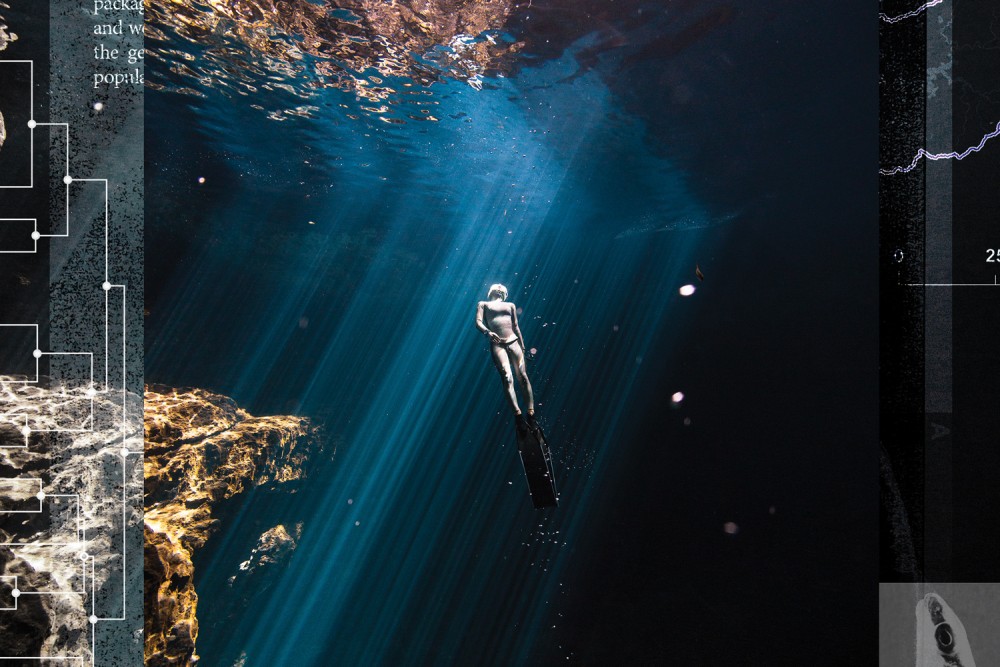God’s underwater language
As a marine biologist, I ask how—and dance at the edge of asking why.

(Century illustration / Source images: Getty & courtesy of the author)
Free diving is like scuba, but without a tank or gear. You simply float at the surface, breathe deeply to slow the blood in your veins, and hold your breath as you kick down. It’s an intense meditation: tuning in to your body and trusting your lungs to carry you 30 or 50 feet below.
Then, you’re underwater. Without the hiss of a regulator, you swim alongside fish close enough to brush fins. You observe—schooling patterns, predatory chases, the way sea fans sway and bend with the gentle surge. Mostly, you listen. On my first free dive, I discovered that the ocean has its own sound. The popping of coral polyps, like a million tiny soda bubbles. The crusty nibble of parrotfish munching algae. Beneath it all, something deeper: a hum, a subtle vibration. It’s the sound of millions of gallons of water sliding over the crust of the earth, an ancient throb like a heartbeat. You feel it as much as hear it, like the vibrating om at the start of a yoga class.
The om of the sea sounds to me like the language God might speak if God chose to take an earthly voice. I’m reminded of an image from Richard Rohr: “Contemplative prayer is like striking a tuning fork. All you can really do in the spiritual life is resonate to the true pitch, to receive the always-present message.” Light, like sound, travels in resonant waves. Particles move with synchronized frequency, oscillating through water and air. As I float, buoyed and rocked by an underwater current, I can almost see the equation—f(x − vt) = A cos [k(x − vt) − φ], the mathematical description of a wave—on the blackboard of a physics class.




